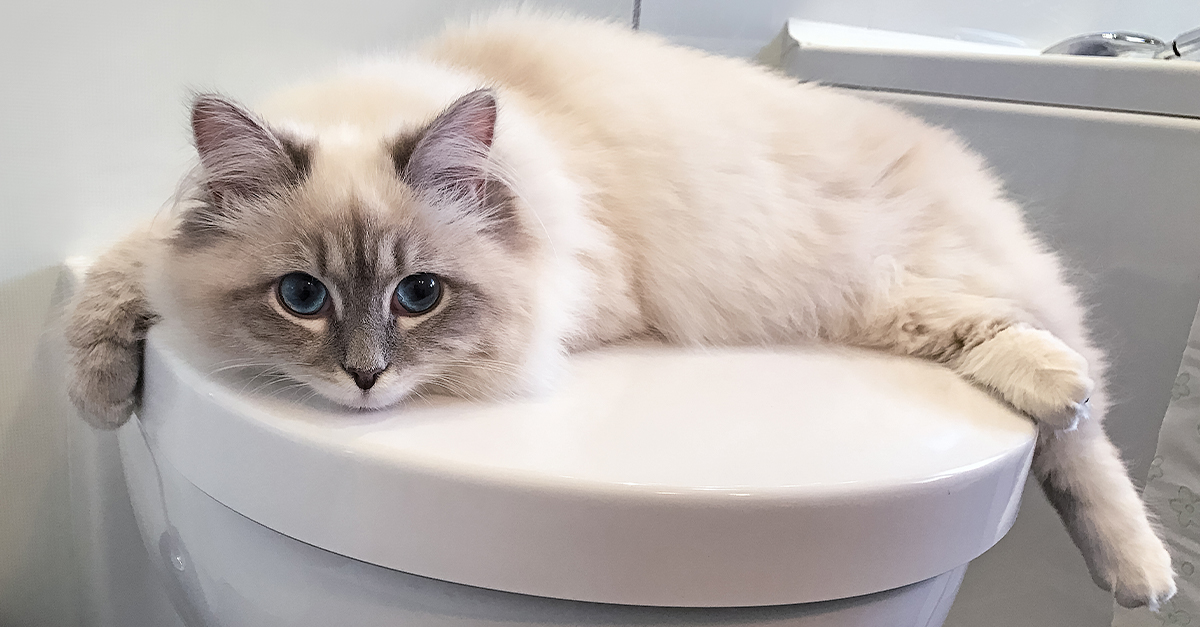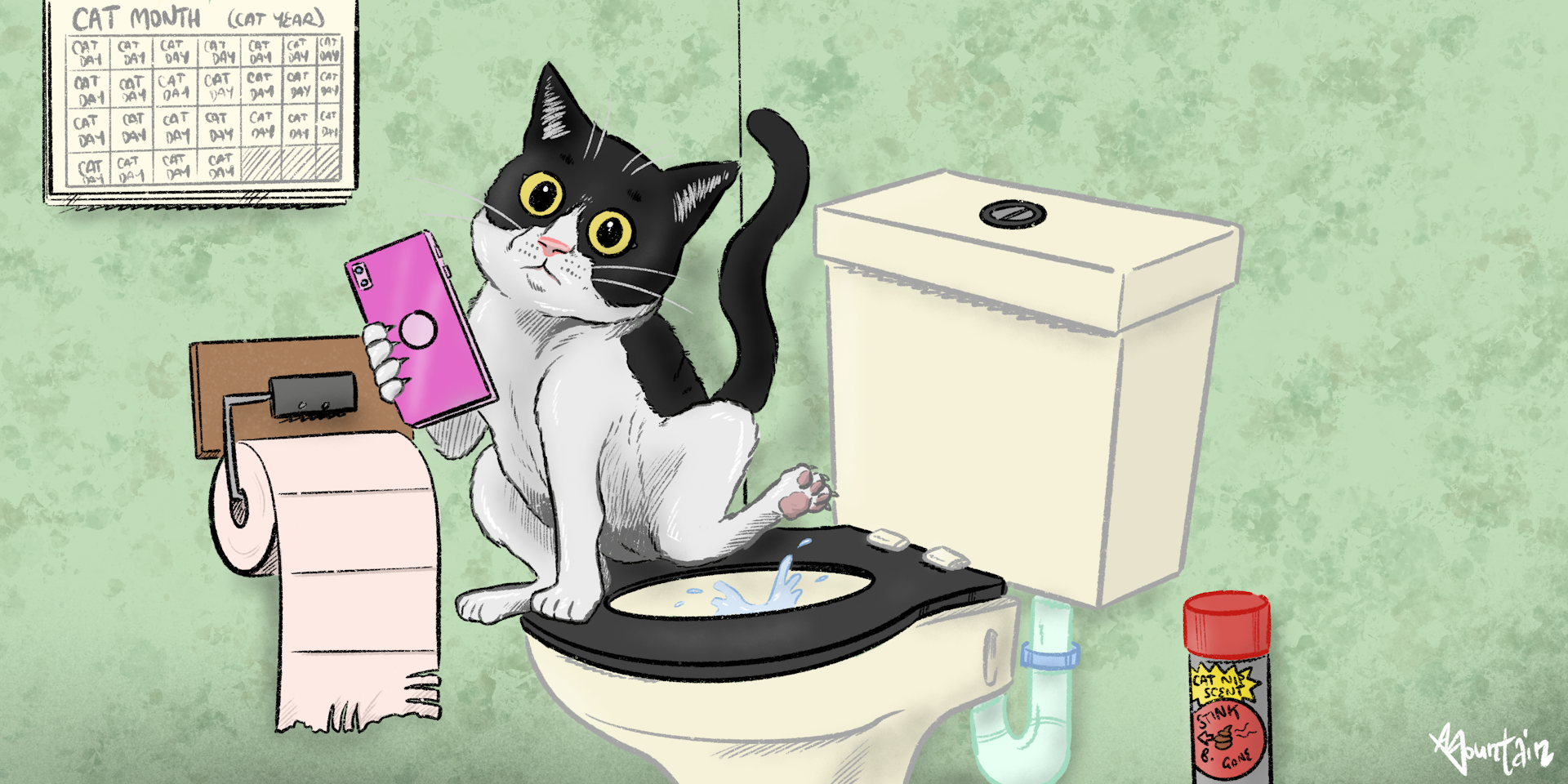Recommended Motives to Prevent Flushing Animal Waste Down the Toilet
Recommended Motives to Prevent Flushing Animal Waste Down the Toilet
Blog Article
How do you feel about Don't Flush Your Pets Poo Down The Loo, Vet Warns?

When it pertains to taking care of waste, specifically animal waste, many people typically resort to the practical choice of flushing it down the commode. Nevertheless, this seemingly very easy service can have significant repercussions for the setting and public health. In this write-up, we'll explore why flushing animal waste down the toilet is a poor idea and give different methods for proper disposal.
Introduction
Appropriate garbage disposal is critical for maintaining ecological sustainability and public health. While it may appear safe to flush animal waste down the commode, it can lead to numerous issues, both for the setting and human wellness.
Risks of flushing animal waste
Environmental influence
Purging pet waste introduces unsafe microorganisms and microorganisms right into rivers, which can adversely influence marine environments. These virus can contaminate water resources and injury marine life, interfering with delicate ecological communities.
Public health issues
Pet waste contains harmful bacteria such as E. coli and Salmonella, which can position severe wellness threats to people. Flushing pet waste down the bathroom can contaminate water supplies, resulting in the spread of diseases and infections.
Alternatives to flushing
As opposed to flushing pet waste down the bathroom, there are numerous alternate disposal methods that are extra environmentally friendly and sanitary.
Composting
Composting pet waste is an environmentally friendly method to throw away it. By composting, organic matter is broken down into nutrient-rich soil, which can be utilized to feed yards and plants.
Land fill disposal
Disposing of animal waste in a garbage dump is one more choice. While not as environmentally friendly as composting, it is a much safer option to flushing, as it protects against the contamination of water resources.
Family pet garbage disposal systems
There are customized pet dog waste disposal systems available that safely and hygienically dispose of pet waste. These systems commonly use enzymes to break down waste and eliminate odors.
Steps to correct animal garbage disposal
To make certain appropriate disposal of pet waste, follow these steps:
Scooping and bagging waste
On a regular basis scoop and bag pet waste using eco-friendly bags. This stops waste from infecting the environment.
Using assigned waste bins
Dispose of bagged animal waste in assigned waste bins, such as garden compost containers or land fill containers. Stay clear of flushing it down the commode in all prices.
Cleansing can and pet areas regularly
Frequently tidy litter boxes and pet dog areas to prevent the build-up of waste and bacteria. Usage pet-safe cleansing products to preserve health.
Benefits of appropriate disposal approaches
Embracing correct disposal methods for pet waste offers a number of advantages:
Reduced environmental pollution
Proper disposal techniques reduce the risk of environmental pollution, securing rivers and communities from contamination
Lessened danger of water contamination.
By staying clear of flushing pet waste down the bathroom, the danger of water contamination is substantially lowered, guarding public health.
Boosted cleanliness and hygiene
Correct disposal techniques promote far better cleanliness and health, creating a safer environment for both human beings and pets.
Verdict
In conclusion, purging animal waste down the toilet is damaging to the atmosphere and public health. By embracing different disposal approaches and complying with appropriate waste management practices, we can reduce the negative influence of animal waste and add to a cleaner, much healthier planet.
Why You Should Never Flush Cat Poop Down the Toilet
A rose by any other name might smell as sweet, but not all poop is created equal. Toilets, and our sewage systems, are designed for human excrement, not animal waste. It might seem like it couldn’t hurt to toss cat feces into the loo, but it’s not a good idea to flush cat poop in the toilet.
First and foremost, assuming your cat uses a litter box, any waste is going to have litter on it. And even the smallest amount of litter can wreak havoc on plumbing.
Over time, small amounts build up, filling up your septic system. Most litter sold today is clumping; it is made from a type of clay that hardens when it gets wet. Ever tried to scrape old clumps from the bottom of a litter box? You know just how cement-hard it can get!
Now imagine just a small clump of that stuck in your pipes. A simple de-clogger like Drano isn’t going to cut it. And that means it’s going to cost you big time to fix it.
For an amusing, graphic tale of what happens when you flush too much litter down the toilet all at once, take a few minutes to read Gene Weingarten’s 2017 Washington Post column “So that’s what happens when you flush cat litter down the toilet.”
Parasitic Contamination
Believe it or not, your healthy kitty may be harboring a nasty parasite. Only cats excrete Toxoplasma in their feces. Yet it rarely causes serious health issues in the cats that are infected. Most people will be fine too if infected. Only pregnant women and people with compromised immune systems are at risk. (If you’ve ever heard how women who are expecting are excused from litter cleaning duty, Toxoplasma is why.)
But other animals may have a problem if infected with the parasite. And human water treatment systems aren’t designed to handle it. As a result, the systems don’t remove the parasite before discharging wastewater into local waterways. Fish, shellfish, and other marine life — otters in particular — are susceptible to toxoplasma. If exposed, most will end up with brain damage and many will die.
Depending on the species of fish, they may end up on someone’s fish hook and, ultimately on someone’s dinner plate. If that someone has a chronic illness, they’re at risk.
Skip the Toilet Training
We know there are folks out there who like to toilet train their cats. And we give them props, it takes a lot of work. But thanks to the toxoplasma, it’s not a good idea.
Leave the toilet to the humans, and accept your future litter cleaning duty.

Frequently tidy litter boxes and pet dog areas to prevent the build-up of waste and bacteria. Usage pet-safe cleansing products to preserve health.
Benefits of appropriate disposal approaches
Embracing correct disposal methods for pet waste offers a number of advantages:
Reduced environmental pollution
Proper disposal techniques reduce the risk of environmental pollution, securing rivers and communities from contamination
Lessened danger of water contamination.
By staying clear of flushing pet waste down the bathroom, the danger of water contamination is substantially lowered, guarding public health.
Boosted cleanliness and hygiene
Correct disposal techniques promote far better cleanliness and health, creating a safer environment for both human beings and pets.
Verdict
In conclusion, purging animal waste down the toilet is damaging to the atmosphere and public health. By embracing different disposal approaches and complying with appropriate waste management practices, we can reduce the negative influence of animal waste and add to a cleaner, much healthier planet.
Why You Should Never Flush Cat Poop Down the Toilet
A rose by any other name might smell as sweet, but not all poop is created equal. Toilets, and our sewage systems, are designed for human excrement, not animal waste. It might seem like it couldn’t hurt to toss cat feces into the loo, but it’s not a good idea to flush cat poop in the toilet.
First and foremost, assuming your cat uses a litter box, any waste is going to have litter on it. And even the smallest amount of litter can wreak havoc on plumbing.
Over time, small amounts build up, filling up your septic system. Most litter sold today is clumping; it is made from a type of clay that hardens when it gets wet. Ever tried to scrape old clumps from the bottom of a litter box? You know just how cement-hard it can get!
Now imagine just a small clump of that stuck in your pipes. A simple de-clogger like Drano isn’t going to cut it. And that means it’s going to cost you big time to fix it.
For an amusing, graphic tale of what happens when you flush too much litter down the toilet all at once, take a few minutes to read Gene Weingarten’s 2017 Washington Post column “So that’s what happens when you flush cat litter down the toilet.”
Parasitic Contamination
Believe it or not, your healthy kitty may be harboring a nasty parasite. Only cats excrete Toxoplasma in their feces. Yet it rarely causes serious health issues in the cats that are infected. Most people will be fine too if infected. Only pregnant women and people with compromised immune systems are at risk. (If you’ve ever heard how women who are expecting are excused from litter cleaning duty, Toxoplasma is why.)
But other animals may have a problem if infected with the parasite. And human water treatment systems aren’t designed to handle it. As a result, the systems don’t remove the parasite before discharging wastewater into local waterways. Fish, shellfish, and other marine life — otters in particular — are susceptible to toxoplasma. If exposed, most will end up with brain damage and many will die.
Depending on the species of fish, they may end up on someone’s fish hook and, ultimately on someone’s dinner plate. If that someone has a chronic illness, they’re at risk.
Skip the Toilet Training
We know there are folks out there who like to toilet train their cats. And we give them props, it takes a lot of work. But thanks to the toxoplasma, it’s not a good idea.
Leave the toilet to the humans, and accept your future litter cleaning duty.

Do you appreciate more info about 4 Reasons Why Dog Poop Cleanup is Important? Try leaving a remark down below. We will be glad to see your ideas about this write-up. Hoping that you come back again soon. Sharing is nice. You won't know, you will be helping someone out. We cherish your readership.
Call Today Report this page